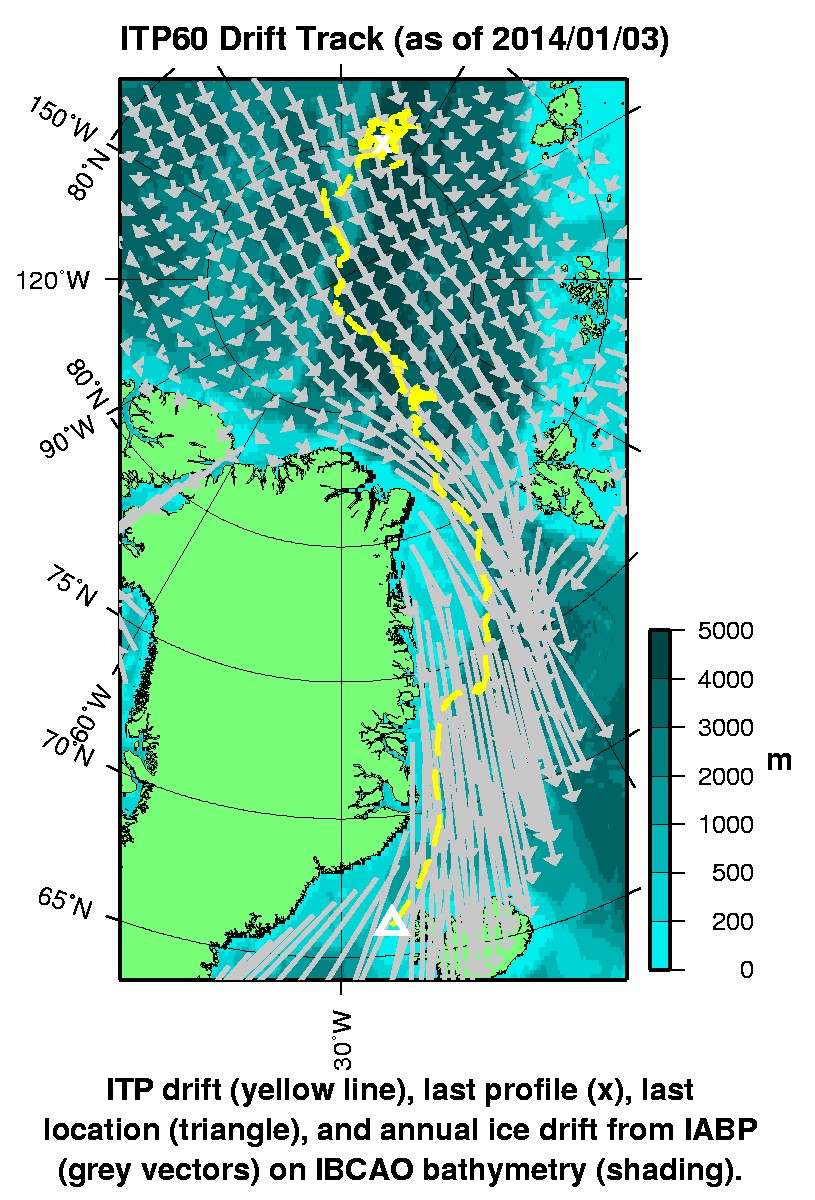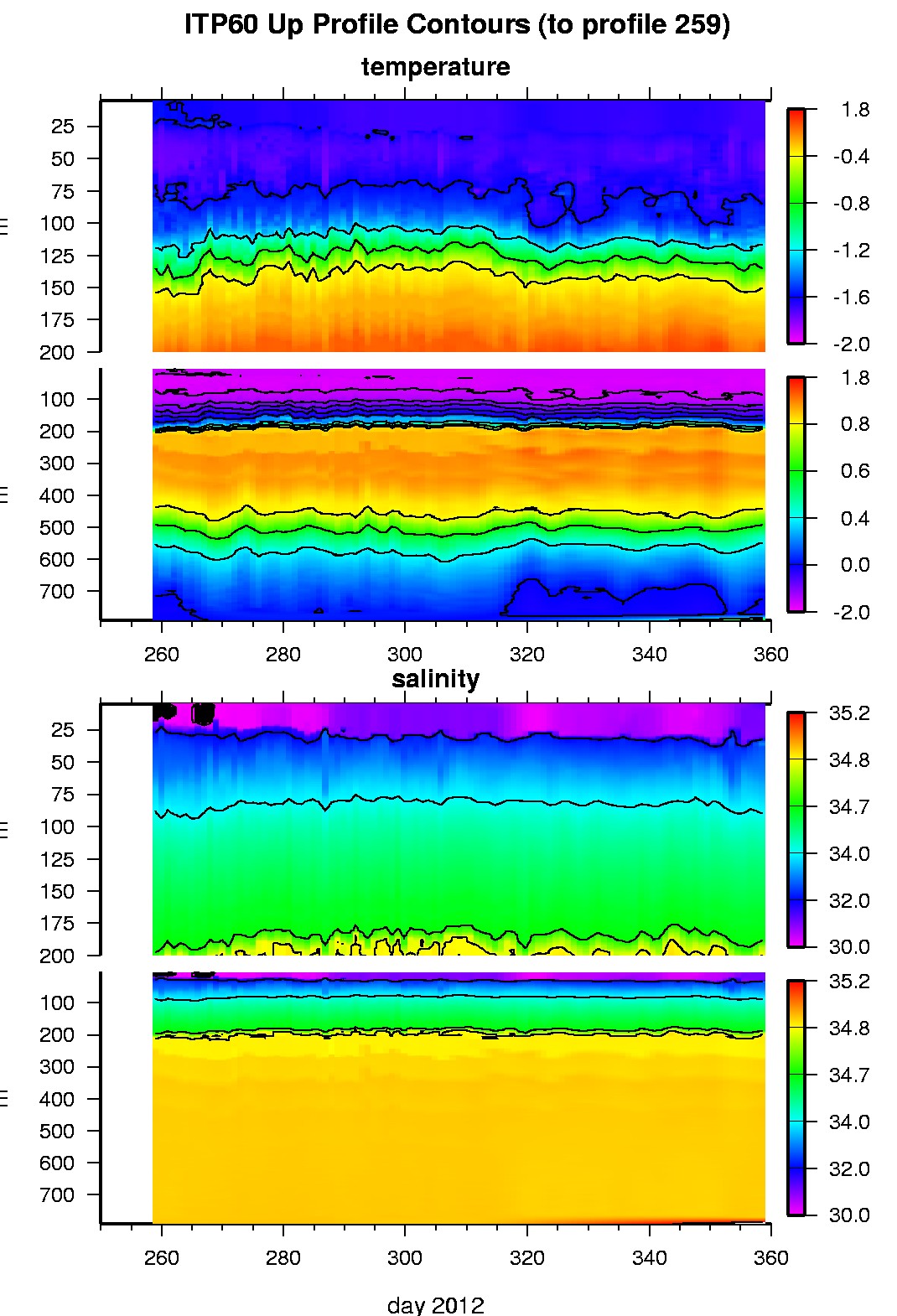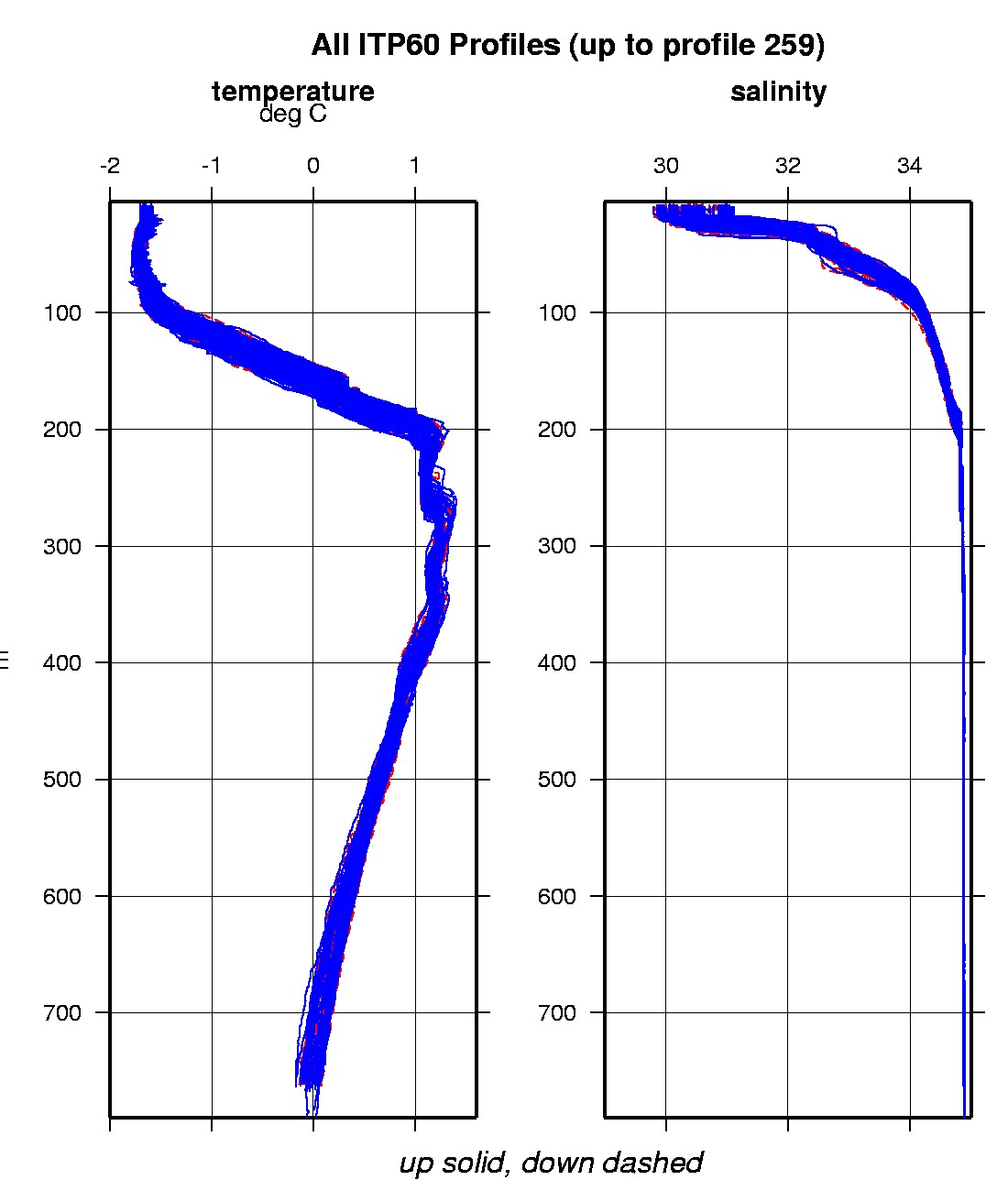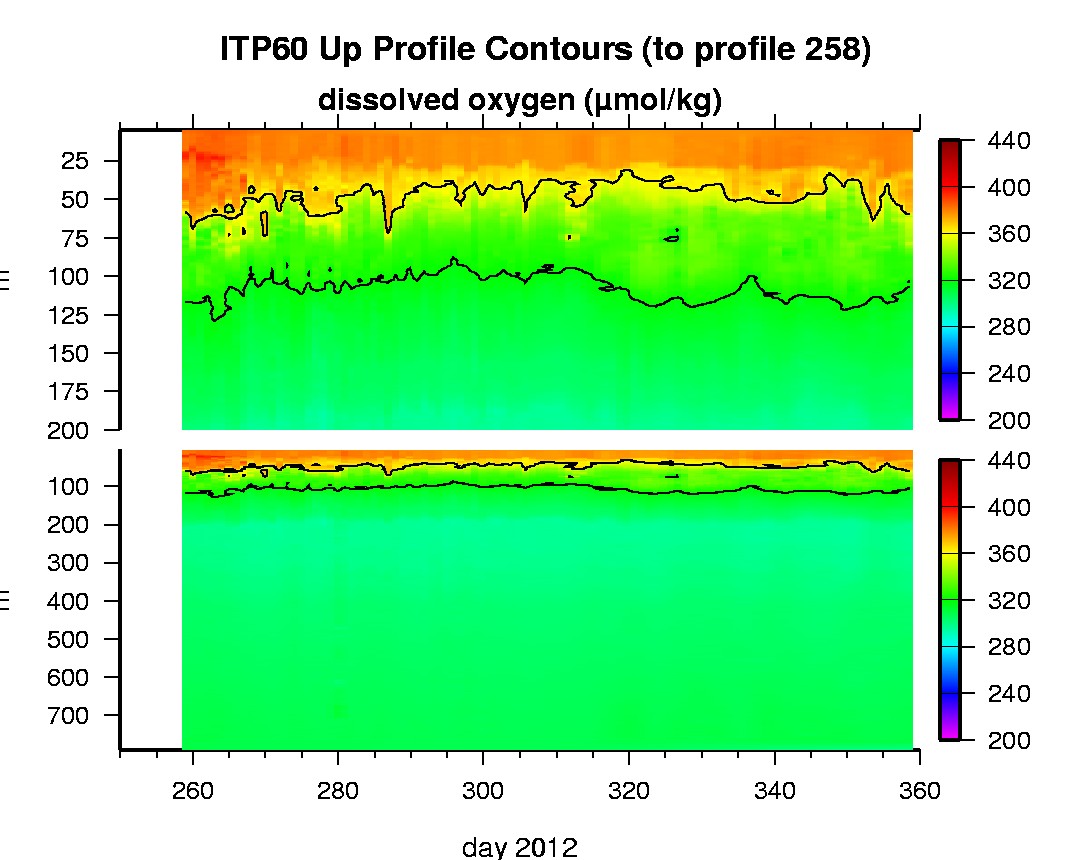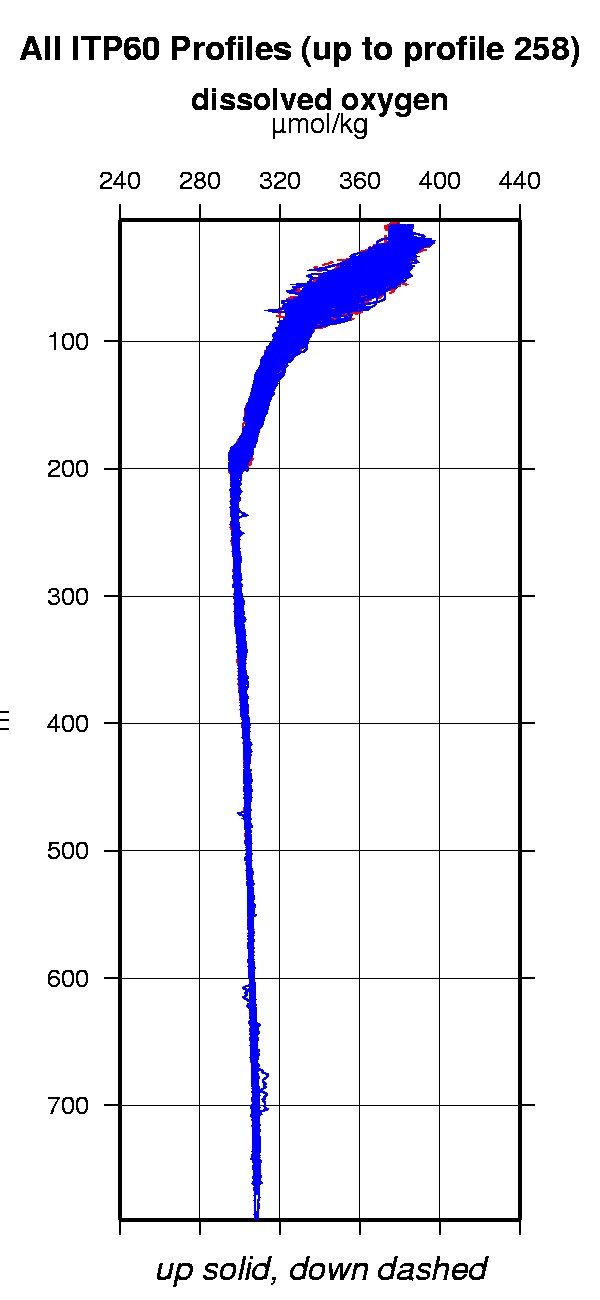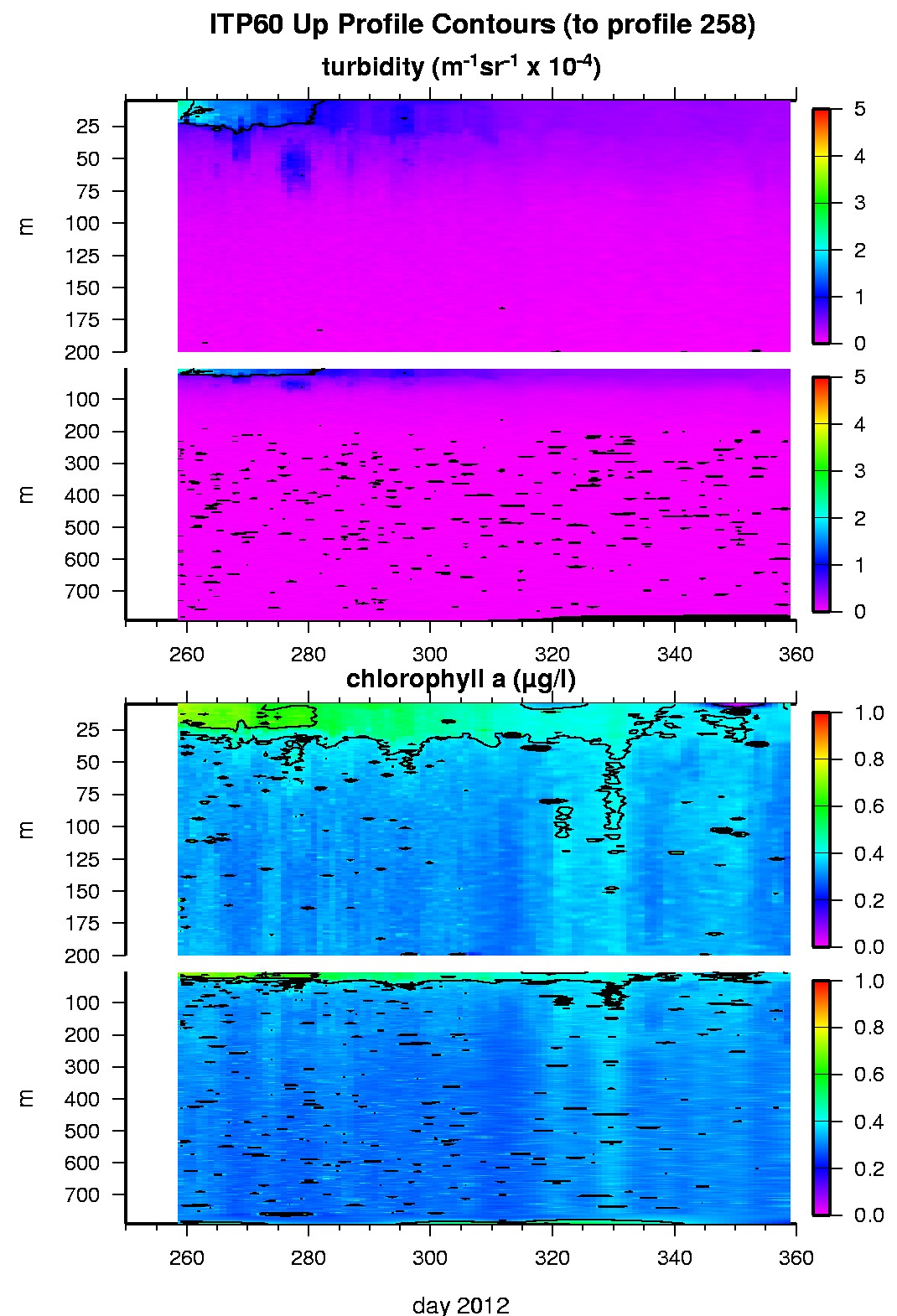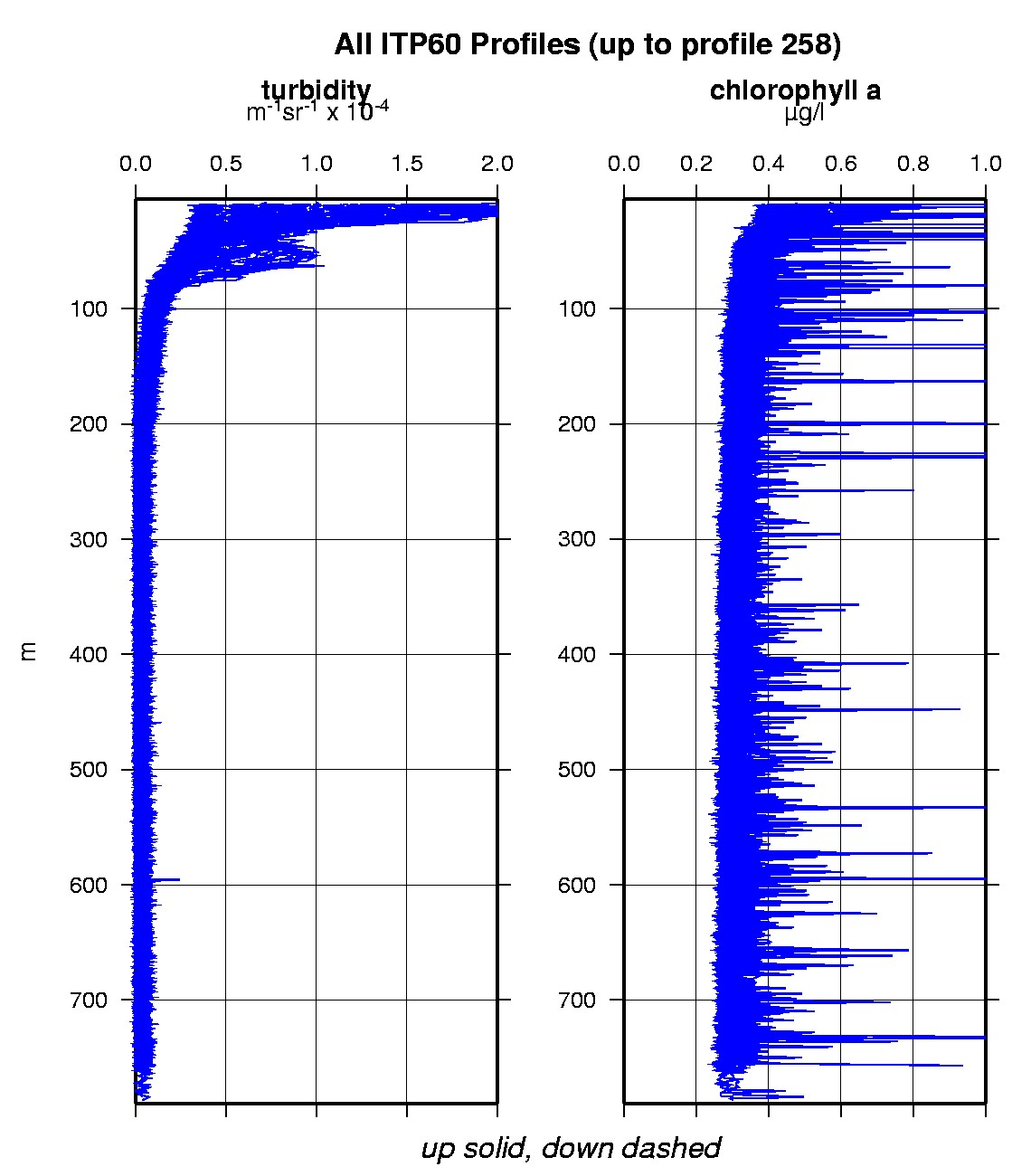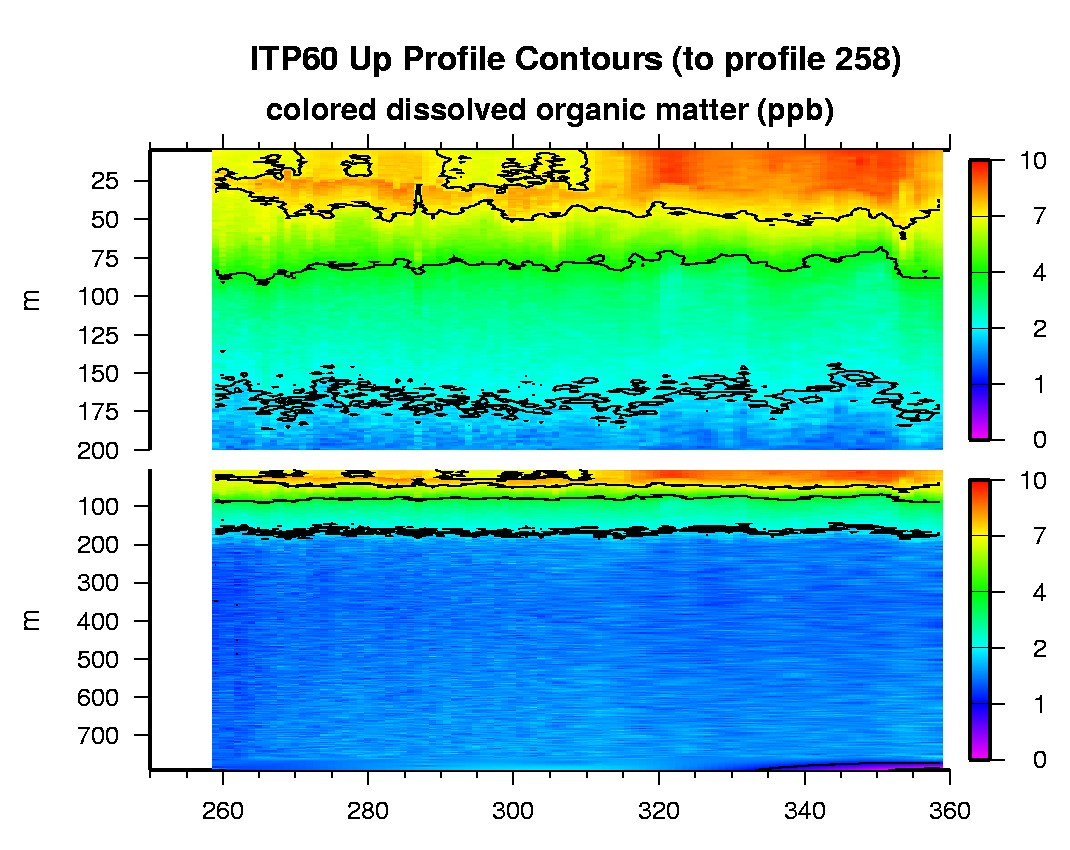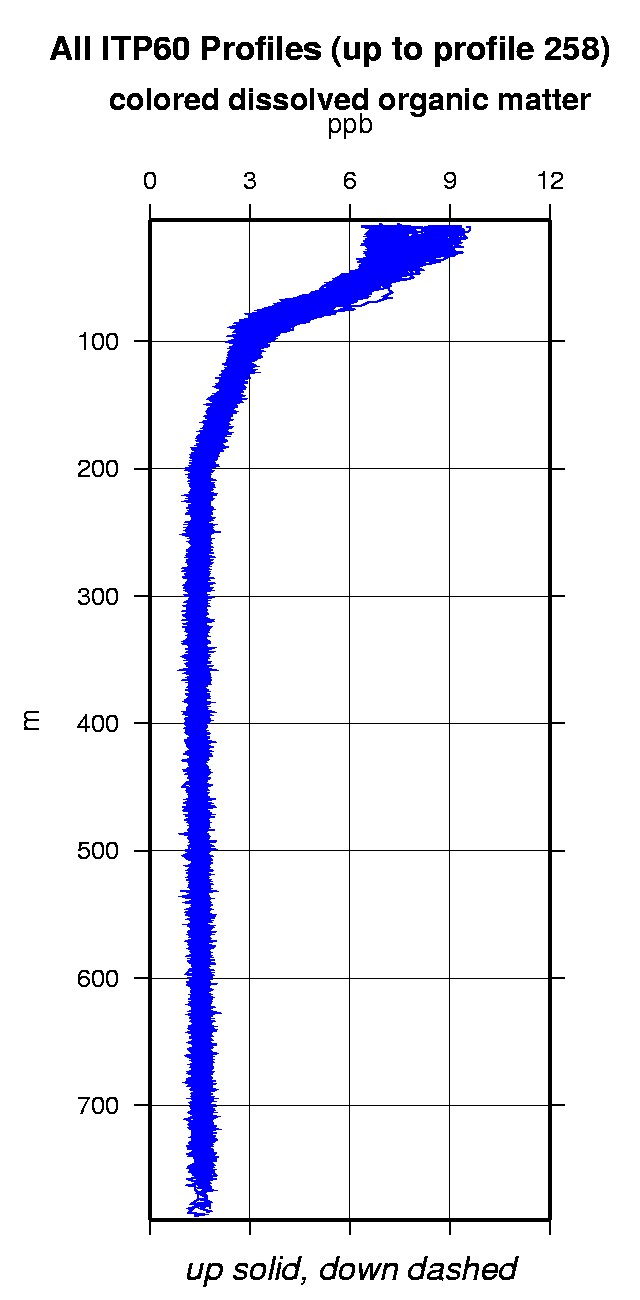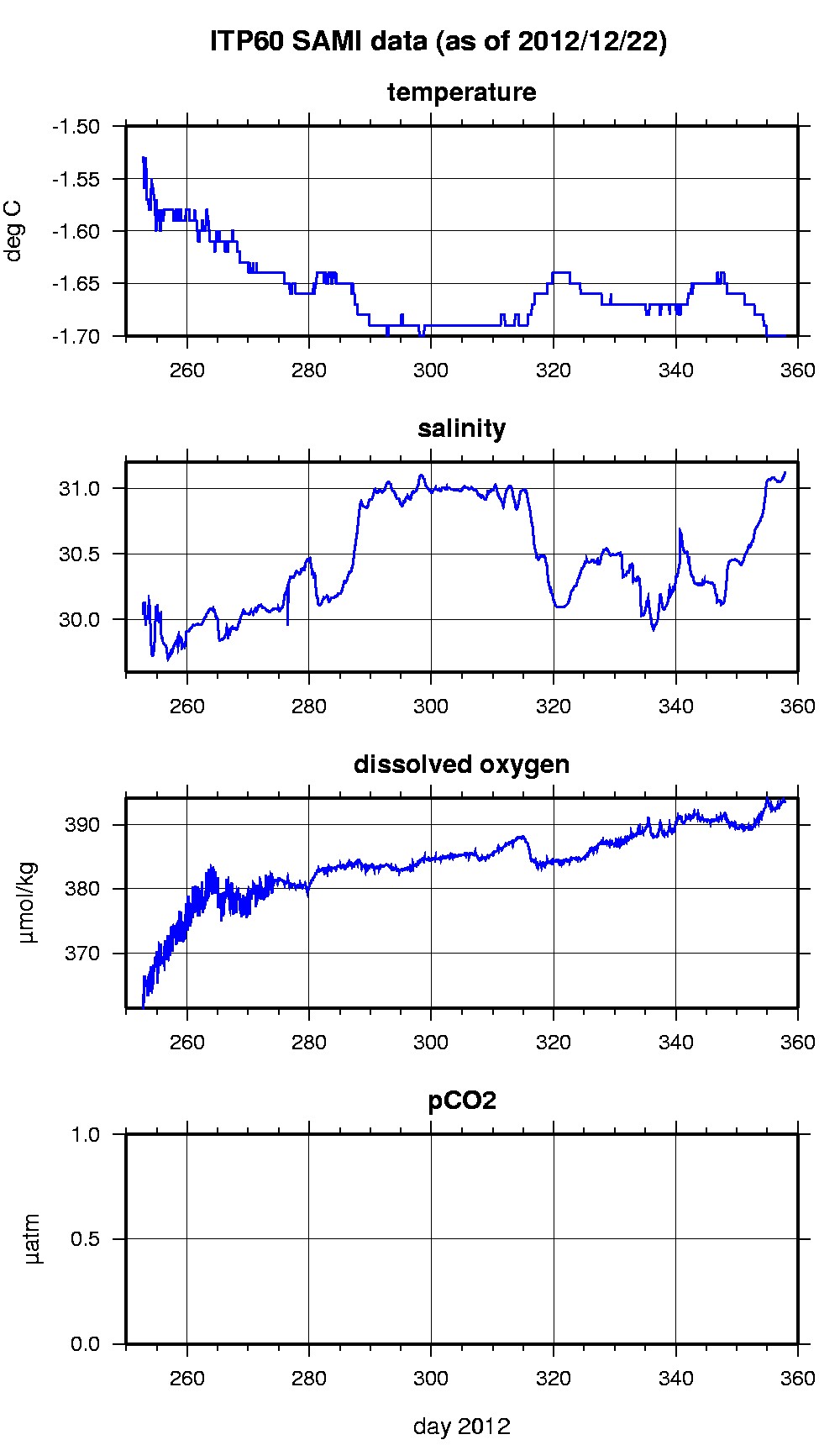ITP60 Data Description
The ITP profiler was configured to operate on a pattern profiling schedule with different summer and winter schedules. In the summer (between deployment and October 31), the instrument conducted a 1.5 day repeating pattern of an up profile from 750 to 7 m, followed by 4 one-way (down, up, down, up) profiles between 7 and 200 m, followed by a down profile from 7 to 750 m, all spaced 6 hours apart. In the winter (after November 1), the instrument conducted a 3 day repeating pattern of an up profile from 750 to 7 m, followed 6 hours later by a down profile from 7 to 200 m, followed 24 hours later by an up profile from 200 to 7 m, followed 6 hours later by a down profile from 7 to 750 m, followed by a 36 hour gap before the pattern repeated. The complicated scheme was designed to conserve battery power to extend the lifetime of the instrument, while maximizing the acquisition of the bio-optical data during the summer months. In the surface package, the GPS receiver was powered hourly to obtain locations hourly, and buoy temperature and battery voltage status were recorded.
The buoy generally meandered southward between 85 and 83°N along 130°E during the 6 weeks then circled east, north, and west before communications with the profiler ceased abruptly. At the same time, the temperature of the buoy electronics increased substantially(from -35 to -10 °C) indicating that ridging was likely occurring around the surface package, so that the buoy was pushed down and not covered in ice. Thereafter communications with the SAMI (including microcat) inductive modem were intermittent but with no data until February 2013. The surface package continued to transmit locations until January 2013 as it drifted southward along the Lomonosov Ridge, exiting the Arctic Ocean through Fram Strait, and floated along the east coast of Greenland to the Denmark Strait.
The plots to the right are of the final, calibrated, edited data (as opposed to the raw data presented on the active instrument pages).
See the Data Products tab to the left for descriptions of the three levels (I, II, III) of data processing and to access all data.
ITP 60 data can also be found at the links below:
Level II hourly buoy location data in ASCII format: itp60rawlocs.dat
Level III 1-Hz processed profile data in MATLAB format: itp60cormat.tar.Z and itp60cormat.zip
Level III 1-db bin-averaged processed profile data in MATLAB format: itp60final.mat
Level III 1-db bin-averaged processed profile data in ASCII format: itp60final.tar.Z and itp60final.zip
Final processed SAMI data
SAMI data
